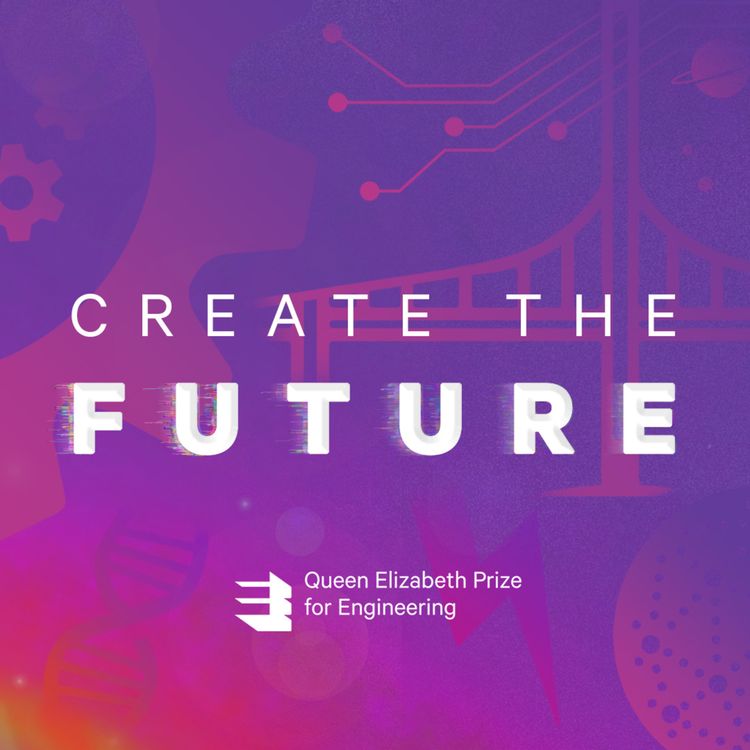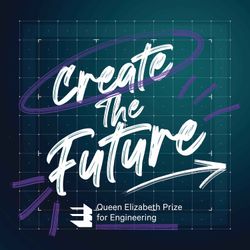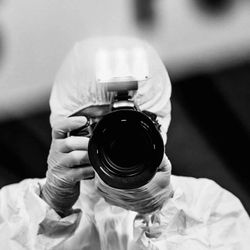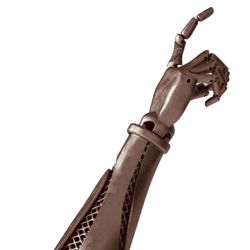Share

Create the Future
Bill Nye: The Science (and Engineering!) Guy
Just as internet pioneer Vint Cerf is known for donning a three-piece suit, so too is this week’s guest known for their accoutrement of choice: a bow tie.
Whether you grew up in the US or not, chances are you’ve heard of Bill Nye. His titular show, Bill Nye the Science Guy, ran for five years in the mid-1990s, winning 19 of the 23 Emmys it was nominated for. Its combination of comedy and accessible educational content proved immensely popular, garnering an international audience while demonstrating that science can be for everyone. Not only did the show inspire a generation to study STEM, but its long-term success is now inspiring new generations as well.
Since the show’s conclusion in 1998, Nye has continued to promote science around the world – holding public lectures, hosting new shows, writing books, presenting podcasts, as well as doing the odd film and television cameo. So while many of us have grown up associating Nye with science, it might come as a shock to some to learn that he's also a mechanical engineer.
In this episode of Create the Future, we explore Nye’s exciting career as a scientist and engineer. We learn the origins of his iconic attire and his debut on television, discuss the impact of a career in engineering, and hear how he successfully campaigned to get sundials installed on both the Spirit and Opportunity Mars rovers.
New episodes of ‘Create the Future: An Engineering Podcast’ every other Tuesday. www.qeprize.org/podcasts
More episodes
View all episodes

51. Guru & Roma reflect
24:49||Season 4, Ep. 51Two of our podcast hosts, Roma Agrawal and Guru Madhavan, sit down for a conversation about the Create The Future series.Find podcast transcripts on our website.Follow @QEPrize on Twitter, Instagram, and Facebook for more.
50. Engineering For Disability
24:36||Season 4, Ep. 50The link between disability, design and engineering tells a complex story. Host Guru Madhavan welcomes two people who have thought deeply on the subject:Dr. Ashley Shew, is associate professor of Science, Technology & Society at Virginia Tech, and specialises in disability studies and the ethics of technology.Dr. Rory A Cooper is founder and senior researcher at the University of Pittsburgh Human Engineering Research Labs, and a world-renowned expert in wheeled mobility.New episodes - conversations about how to rebuild the world better - every other Friday.Find podcast transcripts on our website.Follow @QEPrize on Twitter, Instagram, and Facebook for more.
49. The Future of Failure
32:54||Season 4, Ep. 49What happens when a bridge collapses? Or a space mission ends in tragedy? You call in forensic engineers to investigate.Host Anna Ploszajski contemplates the nature of failure with Dr Sean Brady, who uses scientific and engineering principles to study structural collapses around the world, and who has acted as an expert witness numerous times.New episodes - conversations about how to rebuild the world better - every other Friday.Find podcast transcripts on our website.Follow @QEPrize on Twitter, Instagram, and Facebook for more.
48. The Future of Space Junk
31:14||Season 4, Ep. 48Over decades of space exploration, thousands of rockets have launched, resulting in a sea of debris circling the Earth. It's estimated that there are 30,000 objects over 10 cm, 500,000 marble-sized debris, and 100 million smaller than that.Episode host Anna Ploszajski bravely goes into the unknown, in conversation with:Mike Lindsay, Chief Technology Operator at Astroscale, a start-up seeking to make space more sustainable by pioneering clean-up tech.Hugh Lewis, Professor of Astronautics at the University of Southampton.New episodes - conversations about how to rebuild the world better - every other Friday.Find podcast transcripts on our website.Follow @QEPrize on Twitter, Instagram, and Facebook for more.
47. The Future of Coffee
25:54||Season 4, Ep. 47When you have your morning shot of caffeine, do you stop to savour the engineering involved? Chemistry and mechanics are vital to the growing, roasting, grinding, brewing, and pouring ...Host Guru Madhavan - a tea drinker by trade - chairs a caffeinated conversation with:Professor Tonya Kuhl, chemical engineer and Co-Director of the UC David Coffee Center.Professor Jonathan Morris, author of Coffee. A Global History and host of the A History of Coffee podcast.New episodes - conversations about how to rebuild the world better - every other Friday.Find podcast transcripts on our website.Follow @QEPrize on Twitter, Instagram, and Facebook for more.
46. The Future of 3D Printing Assistive Devices
30:24||Season 4, Ep. 46First described in sci-fi writing in the '50s, the revolutionary dream of 3D printing became a basic reality in the 1980s. One field that is truly has transformed today is that of assistive tech and prosthetics.Host Roma Agrawal is joined by:Willy Allègre, biomedical R&D engineer at Electronic Lab of Kerpape Rehabilitation Center.Enzo Romero, inventor and researcher building prosthetics that incorporate haptic feedback.New episodes - conversations about how to rebuild the world better - every other Friday.Find podcast transcripts on our website.Follow @QEPrize on Twitter, Instagram, and Facebook for more.The 2025 Create the Trophy Competition is now open! The competition gives young people aged 14-24 the opportunity to get involved, testing their design skills using the latest in 3D-design technology.
45. The Future of Engineering Election Systems
23:36||Season 4, Ep. 45It's been a year of elections around the world. How do engineering and design choices affect the candidates running and results generated in our elections? And why do we have far more channels to rate our Uber drivers than we do our politicians?Host Guru Madhavan chairs a political summit with:Charles E. Phelps, provost emeritus of the University of Rochester and expert in health economics.Eswaran Subrahmanian, research professor at Carnegie Mellon University and expert in decision support systems.New episodes - conversations about how to rebuild the world better - every other Friday.Find podcast transcripts on our website.Follow @QEPrize on Twitter, Instagram, and Facebook for more.
44. The Future of Super Shoes
26:36||Season 4, Ep. 44Super shoes are reshaping distance running. Thanks to innovative materials and construction, this new type of footwear is engineered to help runners go quicker with less effort. So how fast can we go in the future? And is it cheating?!Ready? Set ... Go! Host Roma Agrawal races through a fascinating conversation with:Jared Ward, long distance runner, Olympian, and BYU professor.Wouter Hoogkamer, researcher at the University of Massachusetts, Amherst, who studies human locomotion and biomechanics.New episodes - conversations about how to rebuild the world better - every other Friday.Find podcast transcripts on our website.Follow @QEPrize on Twitter, Instagram, and Facebook for more.
43. The Future of Bamboo Buildings
22:50||Season 4, Ep. 43Stronger than steel, more robust than concrete, more flexible than wood? Is bamboo the construction industry's new miracle material. And do bamboo buildings really perform better in earthquakes?Host George Imafidon constructs a fascinating conversation with Seb Kaminski, a structural engineering specialising in bamboo and seismic design.New episodes - conversations about how to rebuild the world better - every other Friday.Find episode transcripts on our website.Follow @QEPrize on Twitter, Instagram, and Facebook for more.